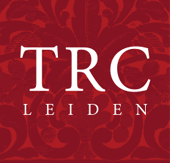Because of their small decorative nature considerable attention is paid to lotus shoes worn on a daily basis and the stories behind them. But there was a also a range of items associated with these shoes, many of which were also highly decorative. As will be seen these items included bandages, socks, as well as leggings.
Lotus shoes were made both at home and by professional shoe makers. Many of the shoes and accessories were made by the girl’s themselves. Examples were often sent to prospective husbands to show their skill in embroidery, as well as the size of their feet. Materials and threads came for making these shoes and the accessories came from various sources including itinerant peddlers who specialised in the cheaper cloths, threads and braids. In addition, there were specialist shops that supplied the more expensive items.
In addition to domestic production there were shoe makers, ateliers and in the 20th century small factories that produced lotus shoes for sale to women with bound feet. The last of these factories the Zhiqiang Shoe Factory in Harbin (capital of the Heilongjiang Province in northwest China), in order to fill a gap in the market. Most of the shoes they made were plain as many women did not want to draw attention to their feet. This part of the factory was shut down in 1998. They continued to produce shoes for women with unbound feet within China, while lotus shoes were also produced for the tourist market.
Making a pair of lotus shoes
A basic pair of lotus shoe is made of various elements, namely, the vamp (upper), sides, heels and sole.
The first step in the preparation of a pair of shoes was to make the soles. These were generally made of a thick and somewhat rough cotton material. A (rice or wheat) flour based paste was spread on a wooden board, then one piece of the thick cotton was laid on the paste. The cloth was then covered with more paste. A second piece of cloth was placed on top of the first and again covered with paste. This process was repeated several times. Then the resulting ‘sheet’ was placed in a sunny spot to dry.
A paper pattern of the required sole was laid on the cotton cloth and the form cut out. The process was repeated until enough forms were prepared to achieve the required thickness of sole. Once cut out, the layers forming the sole were placed on top of each other and sewn together around the outside. The last step was to sew small stitches all over the sole, giving it a quilted process. This was carried out with a thick, cotton thread and a large needle. Sometimes a special tang was used to pull the needle through all the layers.
The cloth needed for the vamp included several thick white cotton stripes about 1.5 cm wide. The side panels were made from cotton or wool strips of about 2.5 cm wide. All these The cotton pieces were pasted together to provide a sturdy inner structure for the shoe. The same pattern pieces for the vamp and side panels was also used for the decorative silk panels that were visible on the outside. Any embroidery on the silk panels was carried out before the shoe was assembled. Pattern books were available with suitable embroidery designs, although some girls copied from older shoes. In some cases it would appear that a more creative soul created a totally new pattern or combination of traditional forms to suit a particular moment or event.
The shoes were often further decorated with one or more kinds of braid. These were sold by the braid peddler who went from one house to another.
When the embroidery was completed the top layers were ready to be glued to the heavier cotton structure, creating the top and sides of the shoe. The next stage was to sew the sole to the upper sections of the shoe
Women who could afford it had a life-size last or form of their feet carved out of wood. Poorer women would have a cloth last the size and shape of the foot, which was stuffed with cotton, beans or grain. These lasts were used to keep in place the top of the shoes and the sole while they were being sewn together.


